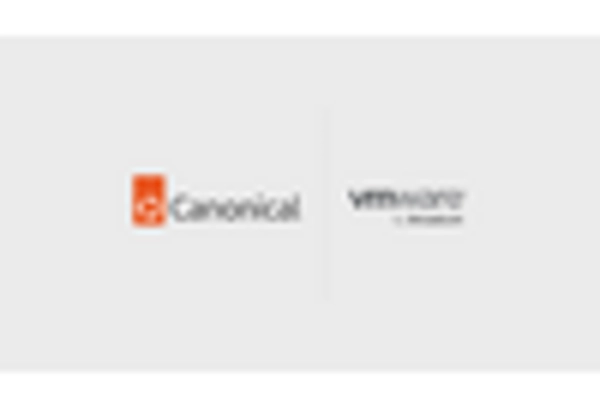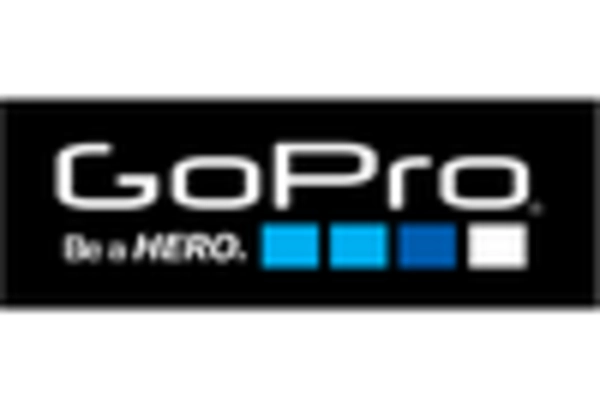Technological Advancements in Imaging
Technological innovations in imaging capabilities are significantly influencing the smart cameras market. Enhanced features such as 4K resolution, wide dynamic range, and improved low-light performance are becoming standard in new models. As of 2025, the market is witnessing a shift towards high-definition imaging, with over 60% of consumers preferring cameras that offer superior video quality. These advancements not only improve the clarity of surveillance footage but also facilitate better identification of individuals and objects. Furthermore, the integration of advanced sensors and optics is likely to enhance the functionality of smart cameras, making them more appealing to consumers. This trend indicates that technological advancements are a crucial driver in the smart cameras market, as they cater to the evolving needs of users seeking high-quality surveillance solutions.
Growth of E-commerce and Online Retail
The expansion of e-commerce and online retail is a notable driver for the smart cameras market. As more consumers turn to online shopping, the need for enhanced security measures in warehouses and delivery processes has surged. In 2025, it is estimated that the e-commerce sector in the US will surpass $1 trillion, leading to increased investments in security technologies, including smart cameras. Retailers are adopting these devices to monitor inventory and deter theft, thereby improving operational efficiency. The ability to integrate smart cameras with inventory management systems further enhances their utility. This growth in e-commerce is likely to continue driving demand for smart cameras, as businesses seek to protect their assets and ensure a secure shopping experience for customers.
Increased Awareness of Smart Technology
The growing awareness and acceptance of smart technology among consumers is a significant driver in the smart cameras market. As individuals become more familiar with smart home devices, the adoption of smart cameras is likely to rise. Surveys indicate that approximately 45% of US households own at least one smart device, and this trend is expected to continue. The convenience of controlling smart cameras through mobile applications and voice-activated systems appeals to tech-savvy consumers. Additionally, educational campaigns and marketing efforts by manufacturers are enhancing consumer understanding of the benefits of smart cameras. This increased awareness is likely to foster a more favorable environment for the smart cameras market, as consumers recognize the advantages of integrating these devices into their homes.
Rising Demand for Home Security Solutions
The increasing concern for home security is a primary driver in the smart cameras market. As crime rates fluctuate, homeowners are seeking advanced surveillance solutions to protect their properties. In 2025, the market for home security systems, including smart cameras, is projected to reach approximately $10 billion in the US. This growth is fueled by the desire for real-time monitoring and remote access capabilities. Smart cameras equipped with features such as motion detection and night vision are becoming essential tools for homeowners. The integration of these devices with mobile applications enhances user experience, allowing for immediate alerts and video access. Consequently, the rising demand for home security solutions significantly propels the smart cameras market, as consumers prioritize safety and peace of mind.
Regulatory Support for Surveillance Technologies
Regulatory frameworks supporting the use of surveillance technologies are emerging as a driver for the smart cameras market. In the US, various states are implementing policies that encourage the adoption of smart security solutions in both residential and commercial settings. These regulations often provide incentives for businesses and homeowners to invest in smart cameras, thereby enhancing public safety. As of 2025, it is anticipated that more than 30 states will have enacted legislation promoting the use of smart surveillance technologies. This regulatory support not only legitimizes the use of smart cameras but also instills consumer confidence in their effectiveness. Consequently, the favorable regulatory environment is likely to stimulate growth in the smart cameras market, as stakeholders recognize the importance of security in their communities.
















Leave a Comment